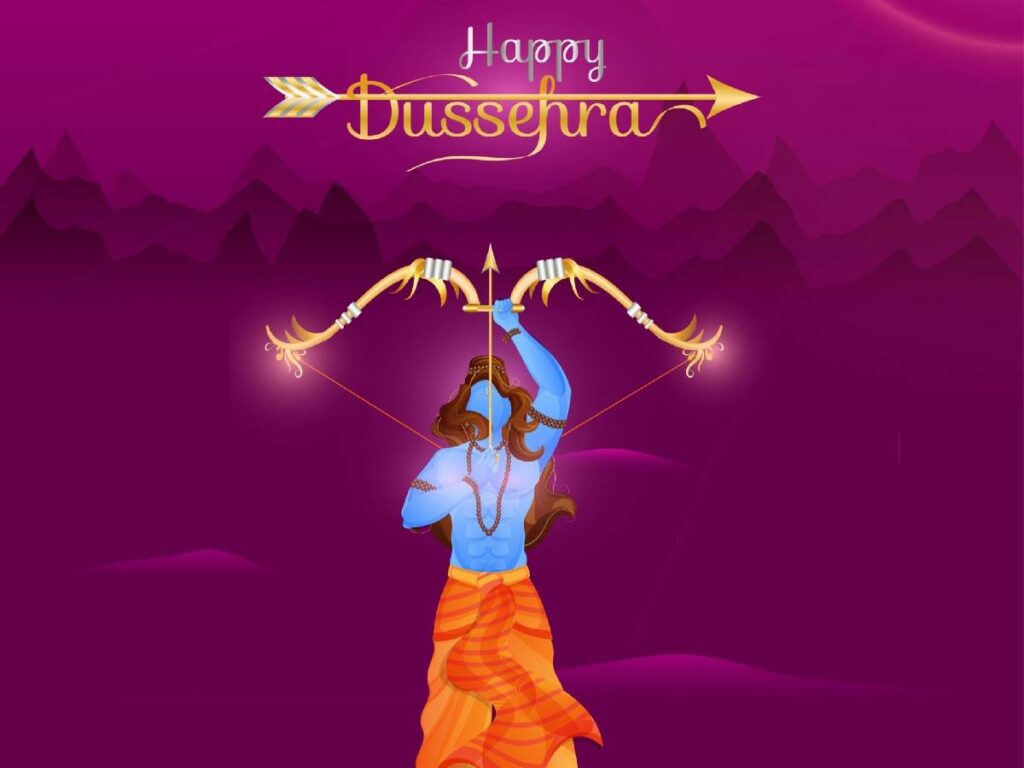
Dussehra, also known as Vijayadashami 2024, is one of the most significant festivals in India, symbolizing the triumph of good over evil. In 2024, Dussehra will be celebrated on October 18. This festival is steeped in mythological significance, marked by vibrant celebrations, cultural performances, and community gatherings.
Significance of Dussehra
Dussehra 2024 commemorates the victory of Lord Rama over the demon king Ravana, as depicted in the epic Ramayana. According to legend, Lord Rama, aided by his loyal brother Lakshmana and the devoted Hanuman, fought a fierce battle to rescue his wife, Sita, from Ravana. The burning of effigies of Ravana, Meghnath, and Kumbhkaran on Dussehra symbolizes the destruction of evil forces and serves as a reminder of the importance of righteousness and virtue.
Rituals and Celebrations
Dussehra is celebrated with various rituals and customs across the country, each reflecting regional traditions. Here are some common practices associated with this auspicious festival:
1. Ravana Dahan
One of the most iconic aspects of Dussehra celebrations is the effigy-burning ceremony, known as Ravana Dahan. Large effigies of Ravana, Meghnath, and Kumbhkaran are constructed and placed in open grounds. On the evening of Dussehra, they are set ablaze amidst cheers from the gathered crowds, symbolizing the victory of good over evil.
2. Durga Puja and Immersion
In many regions, Dussehra coincides with the last day of Durga Puja. Devotees immerse the idols of Goddess Durga in rivers and water bodies, marking her return to Mount Kailash. This immersion is accompanied by cultural programs and community gatherings.
3. Cultural Programs
Dussehra is a time for various cultural events, including dramas, dance performances, and music concerts. These performances often depict scenes from the Ramayana, showcasing Lord Rama’s valor and the moral lessons embedded in the epic.
4. Fasting and Prayer
Many devotees observe fasts leading up to Dussehra, engaging in prayers and rituals to seek blessings from deities. Special prayers and offerings are made to Lord Rama and Goddess Durga during this time.
Regional Variations
While Dussehra is celebrated nationwide, different regions have unique customs:
- Northern India: In states like Uttar Pradesh and Punjab, elaborate Ramlila (theatrical plays) are performed, depicting the life and struggles of Lord Rama.
- Southern India: In Karnataka and Tamil Nadu, Dussehra is celebrated as Navaratri and culminates with the victory celebrations on Vijayadashami.
- Western India: In Gujarat, the festival is marked with Garba dances and vibrant cultural events.
- Eastern India: In West Bengal, Dussehra is celebrated as the conclusion of Durga Puja, highlighting the goddess’s victory over the buffalo demon Mahishasura.
Spiritual Significance
Beyond the celebrations, Dussehra holds deep spiritual significance. It serves as a reminder to individuals to eliminate negative thoughts, behaviors, and influences from their lives. The festival encourages self-reflection and the pursuit of righteousness, reinforcing the belief that good ultimately prevails.
Conclusion
Dussehra 2024 promises to be a grand celebration of victory, hope, and righteousness. As we come together to honor the teachings of the Ramayana and the spirit of the festival, let us reflect on the importance of standing against evil in all forms. May this Dussehra bring joy, prosperity, and peace to all, inspiring us to live a life of virtue and integrity. Embrace the spirit of the festival, and celebrate the triumph of good over evil with family, friends, and community!





:strip_icc():format(webp)/kly-media-production/medias/4045568/original/033696000_1654607287-Infografis_SQ_Safari_Lebaran_Prabowo_Subianto_Jelang_Pemilu_2024.jpg)